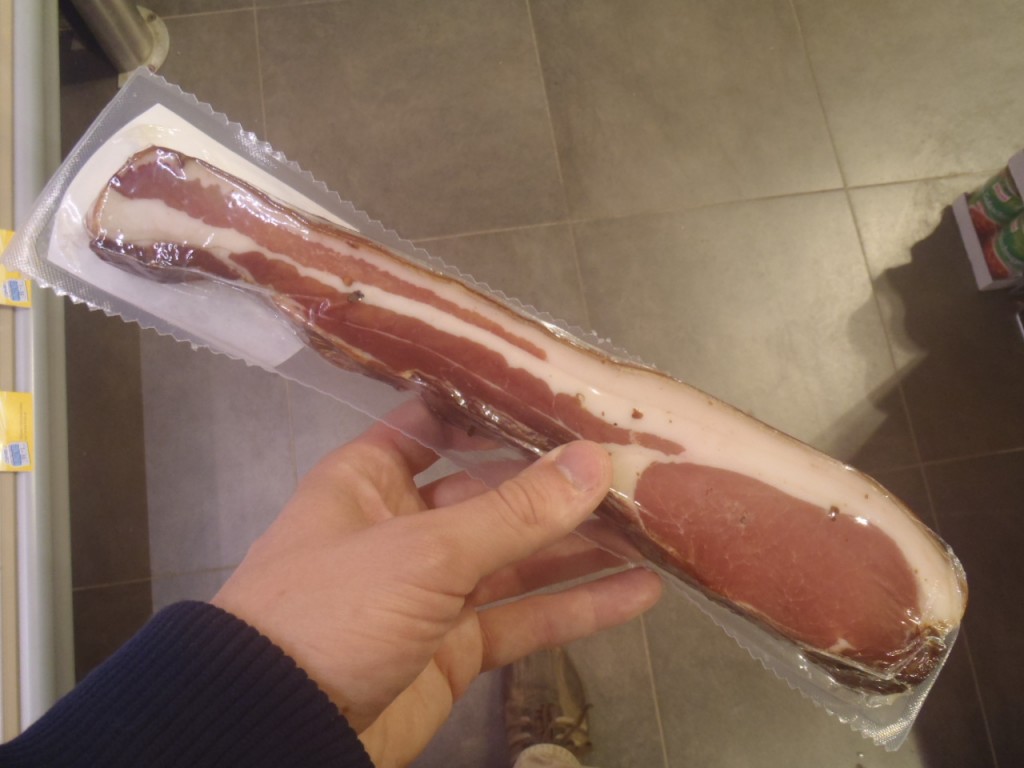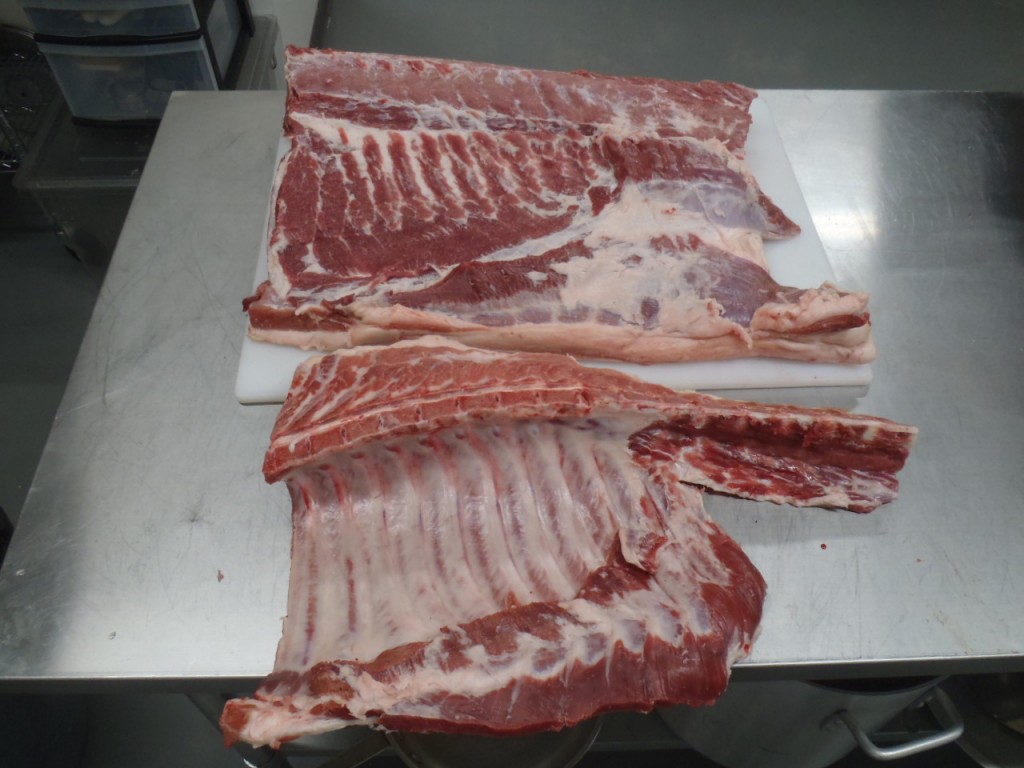I first learned the pork primals in culinary school, and for years I considered that information dogmatic. Then in an Austrian grocery store I saw this:
It’s called Carinthian farmer bacon (Kaerntner Bauernspeck). Carinthia is a province in southern Austria, known for its rustic food. It took me a few moments to realize where exactly this cut would have come from on a pig. It is in fact a pork loin, with the side or belly still attached, cured as one large piece, cold-smoked, and sold in thick slabs.
Novel cuts like this are just as easy to butcher as the classics. Following is a quick tutorial, with photos, to prove the point.
Here is a side of pork with the shoulder and leg removed. In other words we have the loin and belly, still attached to each other.
We can removed the back bones and rib cage in one piece. I start at the feather bones, then follow the chine, ribs, and finally the sternum, and closely as I can with my knife.
The final loin-belly combo:
A profile shot, showing the lean, round rib-end of the loin, giving way to the fatty waves of the belly:
Since the loin is lean and tender, but the belly fatty and tough, this cut benefits from brining and very slow roasting. You could also roll the meat up so that the loin is surrounded by the spiraling belly. Not only does this make the cut more compact, it ensures that the belly will get an extensive render before the loin reaches its finishing temperature. Alan Irving tells me that bacon rolled in this way is called Ayrshire bacon (Ayrshire is a township in Scotland.)
A few places around town will serve a loin wrapped in a belly and call it porchetta. True porchetta is a specialty of Northern Italy: a small pig, left whole but boned out, stuffed with maybe sausage or cubed meat, slow-roasted until the skin is crackling and the inside moist and tender. While a loin wrapped in a belly is a weak impression of the true porchetta, the terminology is widely used in North America.




